SUBJECTS
GRADE
Show Results
Drawing Cupcakes and Bittersweet Dilemmas
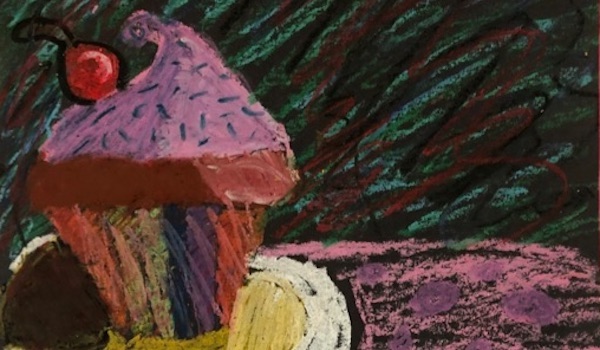
Lesson Summary
- Read aloud the book Love Monster and the Last Chocolate.
- Discuss dilemmas and working through difficult decisions.
- Draw with oil pastels and learn about shading, highlights, and horizon lines.
Lesson Plan and Procedure
Lesson Key Facts
- Grade(s): 3, 4, 5
- Subject(s): English Language Arts, Health, Visual Arts
- Duration of lesson: Two or three sessions, 45 minutes each
- Author(s): Christine Palmer
Introduction
This lesson integrates social and emotional health with visual arts and English language arts. It addresses emotional dilemmas through reading the book Love Monster and the Last Chocolate. Although this is a picture book and it is usually read in younger grades, it is a great tool for fourth-grade students because of its easily recognizable theme and relatable dilemma.
Dilemmas and Difficult Decisions
Read aloud the book Love Monster and the Last Chocolate by Rachel Bright. Lead the students in summarizing the text. Using the details in the story decide as a class what the theme and main idea are. Take the time to clarify the difference between the two if needed.
Teacher: Today we are going to take a closer look at dilemmas. A dilemma is a difficult decision that is hard to make. What was the dilemma in this story? Is sharing easy? Why or why not? When should we share? Are there times when we shouldn’t share?
Have students think about what kinds of dilemmas or choices they encounter that are stressful. Give students the opportunity to share their thoughts with a neighbor, and call on a few students afterwards to share their experiences with the class.
Teacher: When we face dilemmas, we can apply some of the following skills to help us think through our decisions:
- Identify the dilemma.
- Gather information.
- Identify alternative choices and ask for help from people that we trust such as friends, teachers, and parents.
- Predict the immediate and long-term consequences.
- Predict the immediate and long-term consequences.
- Act.
- Evaluate results.
Which of these things did the Love Monster do in the story? Which of these things did he not do, but could have helped him? (For example, the Love Monster could have gathered information by examining the box of chocolates.)
During our activity you will need to make some decisions about a work of art that you will be creating. Some of you might find it difficult to make those decisions.
Today we aren’t drawing chocolates, but we are going to draw something just as delicious: we will be drawing cupcakes. The cupcake you draw should represent someone you know and should be your very best work. It should have that person’s favorite flavors, toppings, or colors, or a theme that the person might appreciate. You have to decide if your cupcake will represent your mom, your dad, your friend, your teacher, or even you. Now here’s the dilemma: when you finish your drawing, you have to decide if you are going to give your artwork away to that person or keep it for yourself. You might be really proud of your drawing when you are finished, and it might be difficult to let go of it. Go through the decision-making process that we talked about to help you make your decision.
Studio Activity
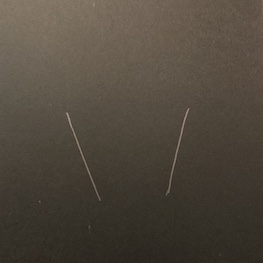
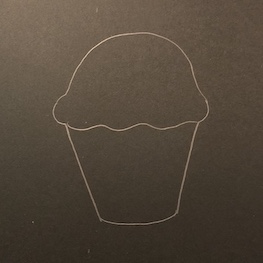
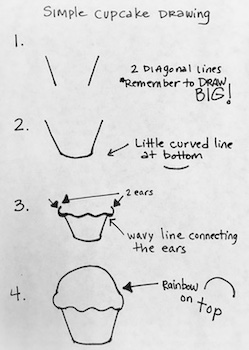
Give students a piece of black paper and pencil to begin with. Prepare the students to draw BIG! The cupcakes should be very large, taking up at least three-fourths of the page. Using the “Simple Cupcake Drawing Instructions,” help the students make a light pencil outline of a cupcake. This is a basic outline. Different is good, so encourage students to make original choices to create unique cupcake designs!
After pencil designs are complete, do a quick check for understanding and make sure drawings are large enough.
Go over the following vocabulary:
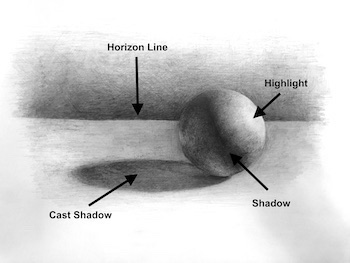
- Highlight: The lightest part of an object. It is exposed to the direct light source.
- Cast shadow: The dark shadow that is cast on the surface that the object is resting on. It is behind the object, on the opposite side of the highlight.
- Horizon line: Line drawn behind objects to represent eye level (table top).
- Shading: Making something darker to appear three-dimensional.
- Overlapping: Coloring on top of other colors to create new colors.
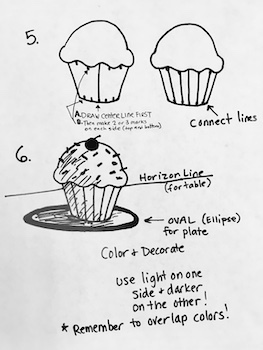
Show students an example of a finished cupcake drawing, and have them identify some of the characteristics mentioned in the vocabulary.
Teacher: Can you figure out what materials were used to create this artwork? How do you think the artist used those materials to create the shadows and highlights?
Show students how to add details from the drawing instructions below, including a cast shadow, an oval for the plate, and a horizon line for the table. This is a good time for students to add any other unique details to their designs.

Show students how highlights and cast shadows can be built up by using oil pastels to overlap colors. Explain that you can layer different colors to make new colors. Step-by-step pictures can be seen below.
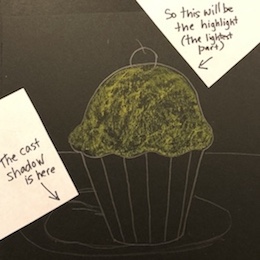
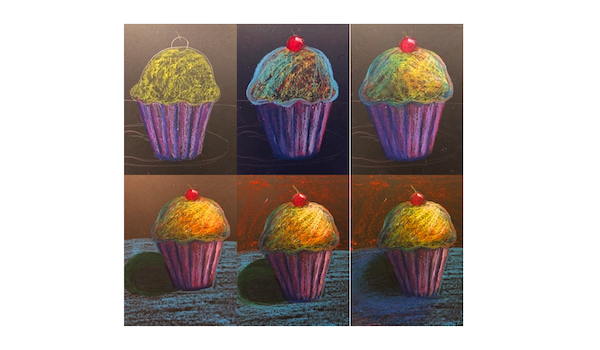
Fourth-Grade Examples Using Construction Paper Crayons
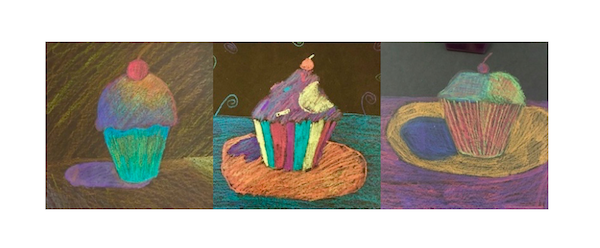
Extension
Have students write some kind of poem, such as a cinquain.
Cupcake Cinquain Example

Learning Objectives
- Describe how choices can have positive and negative consequences.
- Identify the theme of a story, and explain it using details from the text.
- Summarize the text.
- Determine the main idea of a text, and explain how it is supported by key details.
- Analyze characteristics of shading a form and apply those techniques by shading a cupcake with oil pastels.
Utah State Board of Education Standards
This lesson can be used to meet standards in many grades and subject areas. We will highlight one grade’s standards to give an example of application.
Grade 4 Health
- Strand 1, Standard 4.HF.2: Describe how choices can have positive and negative consequences and give examples of how a person’s decisions can be positively or negatively influenced by others, including peers.
Grade 4 English Language Arts
- Standard 4.R.6: Read a variety of text types, including those from diverse cultures to determine a theme or main idea and explain how it is supported by key details; summarize texts using textual evidence. (RL & RI)
Grade 4 Visual Arts
- RESPOND (4.V.R.): Students will understand, evaluate and articulate how works of art convey meaning for the observer as well as the creator.
- Standard 4.V.R.3: Refer to contextual information and analyze relevant subject matter, characteristics of form, and use of media.
Equipment and Materials Needed
- Bright, Rachel. Love Monster and the Last Chocolate. New York: Scholastic Inc., 2017.
- Blue or black construction paper
- Pencils
- Oil pastels or construction-paper crayons
Additional Resources
Image References
- Images 1–4: Christine Palmer.
- Image 5: Rachel Jackson.
- Images 6–11: Christine Palmer.

www.education.byu.edu/arts/lessons
 Download
Download